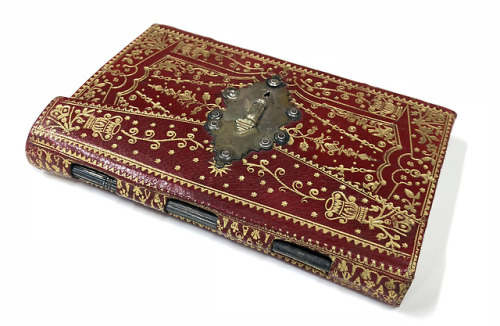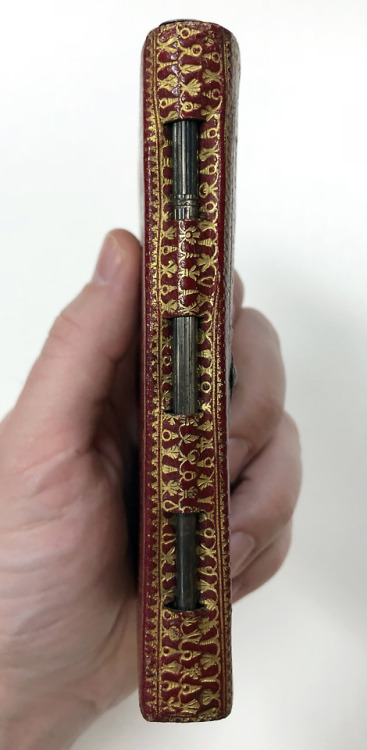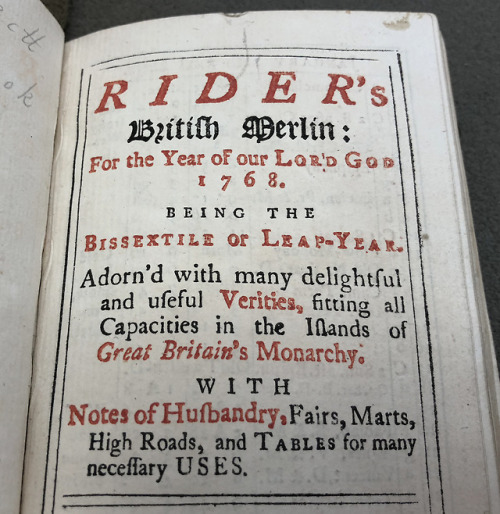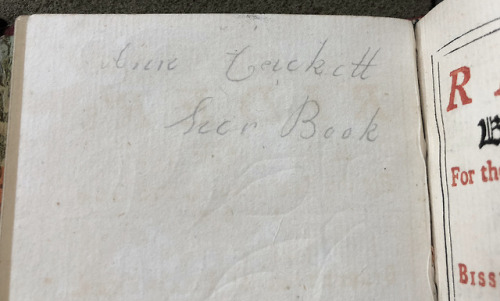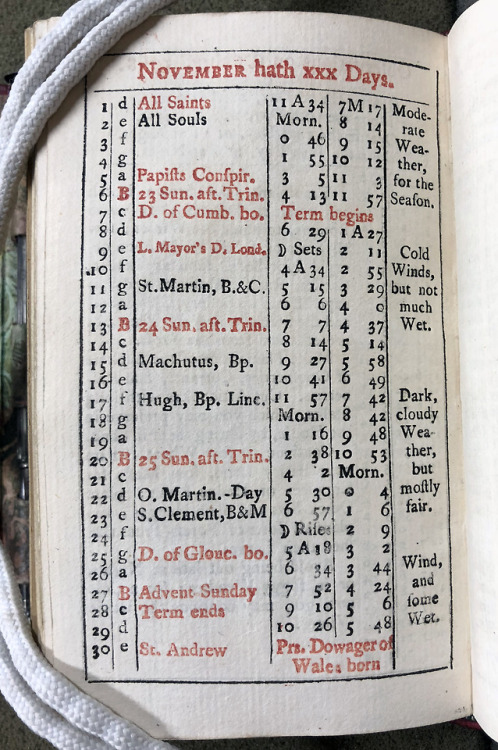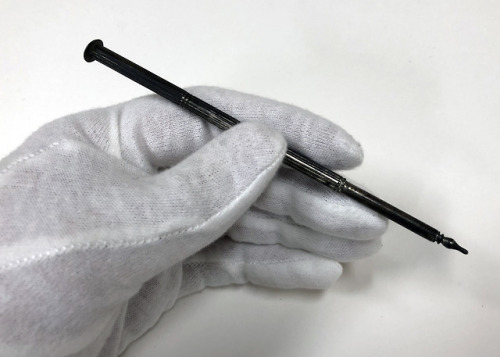msuprovenance: Unlocking a 250-Year-Old Almanac Special Collections has recently acquired an intrigu
msuprovenance: Unlocking a 250-Year-Old Almanac Special Collections has recently acquired an intriguing copy of Rider’s British Merlin, an almanac published in London in 1768 — 250 years ago this year! Rider’s almanac first appeared in 1656, “compiled for the benefit of his country” by one “Schardanus Rider,” believed to be an anagram of the name of physician and astrologer Richard Saunders (1613-1675). The almanac continued to be published for many years after his death. A number of special features make our copy uniquely interesting, such as its elaborate red morocco binding. Perhaps most fascinating is the metal lock, which is actually even more complex than it might appear at first glance. In spite of the provided key, it seems that the only way to truly open the lock is through a secret mechanism — by gently sliding one of the rivets connecting the lock to the cover, the inner latch shifts, and the flap can be opened. A convenient slot is incorporated into the flap to store a metal stylus, which is (happily) still present. This was used for taking notes on a pair of waxed sheets bound in at the front of the volume, which effectively acted as erasable writing tablets. In much the same way that the ancient Romans used wax-filled wooden frames for temporary note-taking, the pages in this almanac could be incised with the stylus and then erased at the appropriate time. An owner of this volume — perhaps Ann Cackett (?), who wrote her name on one of the flyleaves — has used the stylus many times, leaving incisions behind in the form of repeated circles and other rudimentary markings. Inside each cover is a little fold-out pocket for the storage of important documents, though sadly they arrived at our library empty. These pockets are partially formed by the end-papers, which are made from beautiful multicolored Dutch gilt paper (actually originating in Germany). Our papers bear a portion of the name of their maker: “Johan Wilhelm.” It’s easy to concentrate on this almanac’s bells and whistles, but it is also rewarding to look at its contents. It opens with a handsome calendar, printed in red and black, that incorporates religious, astronomical, meteorological, and agricultural observations. Other sections include a list of the year’s moveable feasts (holy days that occur on different days each year), a calendar of eclipses, a zodiac man (a diagram of the relationships of the planets to various parts of the human body), a table of the monarchs and the dates of their reigns, a description of the country’s major roads with the distances between towns, and an extensive list of the fairs regularly held in England and Wales. Several pages are filled with the reckoning of the years since major events – 4061 since Noah’s Flood, 315 since “printing first used in England” (this is about 20 years earlier than the date generally accepted today), 188 since “a blazing star in May” was observed, and five since “a general peace.” Finally, there is a tipped-in sheet documenting “An account of the holydays” for 1768. (This is unrecorded in the English short title catalogue.) We are excited to add this unique almanac to our collection, and look forward to welcoming you into our reading room to see it in person! Provenance addendum: This beautiful little almanac also bears an original two-penny duty stamp in the lower corner of its title page. This was mandated by the Stamp Act of 1712, which assessed duties on all sorts of printed matter (a version of this act was instituted in the colonies in 1765, and the reaction against it helped to spur on the new cause of American independence). -- source link
Tumblr Blog : msuprovenance.tumblr.com
#stamps#stamp act#18th century#provenance
